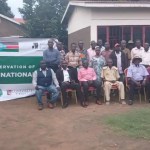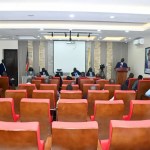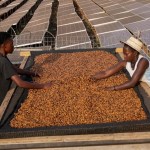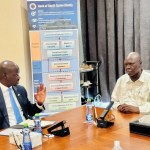(MOROBO) – Residents of Morobo, Yei and Lainya counties in Central Equatoria State are urging the national government to resume and complete the long delayed construction of the Juba–Lainya–Yei–Morobo–Kaya highway, a critical infrastructure project that was once expected to transform trade and movement across the region.
Launched in 2020 as part of South Sudan’s “oil for roads” programme, the project aimed to upgrade the Kaya–Yei–Lainya–Juba Road into a tarmacked highway linking South Sudan to Uganda through Morobo County.
However, four years later, visible progress remains minimal. The once promising road development has stalled, with local officials attributing the delay to economic hardship and persistent insecurity in parts of the region.
Local residents now describe the route as nearly impassable. Communities say that despite early bush clearance and planning efforts, work abruptly stopped, leaving travellers to navigate through deep potholes, muddy stretches, and damaged bridges. These challenges have increased transport costs, delayed movement of goods and people and affected access to markets, schools and health services.
Many residents see the road as more than infrastructure. To them, it is a symbol of the independence struggle that has yet to bring tangible development to local communities. Likambu Isaac, a resident of Morobo County, reflected on the road’s historical importance during the SPLA liberation movement under the late Dr. John Garang.
“This road once connected our communities to the heart of the country. Today, it lies in neglect, abandoned by the very institutions it helped create,” he said.
Before the 2016 conflict, the highway was a key corridor for trade between South Sudan and neighbouring Uganda and the Democratic Republic of Congo. It served as a major lifeline for farmers, traders and transporters.
“What used to be a few hours’ journey now takes more than a day,” Likambu added. “Some travellers even spend nights on the road because of its terrible state.”
He called on both the state and national governments to prioritise the road’s rehabilitation, not just as a developmental need, but as a commitment to communities long sidelined.
“A working road network brings peace, development and hope. This one has become a symbol of abandonment.”
Other voices repeated the same concerns. Amin Ezborn, a driver who frequently uses the Kaya–Yei–Lainya–Juba Road, said he does not understand why the construction was stopped.
“The road connects South Sudan to Uganda and Congo. Fixing it would boost regional trade and speed up economic development in Morobo, Yei and Lainya.”
Morris Dada, from Mugwo Payam in Yei River County, said communities made sacrifices during the bush clearance stage, losing mango trees, houses and even graves.
“We accepted all this for a tarmacked road, but now we are left with nothing to show for it.”
He believes that the vision of taking towns to the people, once championed by Dr. Garang, remains unfulfilled in many rural areas.
“We fought for separation from Khartoum hoping for development. But where is it?”
Dusman Keji Timon of Lainya County said that while the road was cleared and straightened in some sections, no proper grading was done.
“It is now worse than before. It becomes inaccessible during the rainy season,” he said, calling on elected leaders from Morobo, Yei, Lainya and Juba to speak up.
Despite repeated attempts, the national Ministry of Roads and Bridges did not respond to requests for comment. However, in a Facebook post made in May 2025, Minister Simon Mijok Mijak announced that South Sudan, Uganda, and the Central African Republic had held a Tripartite Meeting on Roads Infrastructure Development and Trade Promotion in Kampala. The agreement included plans to develop key regional corridors such as:
| Regional Trade Corridor Project | Route Description |
|---|---|
| Corridor 1 | Kampala – Karuma – Nimule – Juba – Kaya – Yeyi – Juba |
| Corridor 2 | Juba – Mundri – Maridi – Yambio – Yubo – Ezo – Bambouti – Obo – Sibuti |
The minister also stated that efforts were underway to jointly mobilise funds with development partners to support the roads as part of long term trade infrastructure. However, the announcement did not clarify whether the planned construction would involve tarmacking or use of gravel (murram).
According to residents, reviving the road project could serve as a meaningful Independence Day gift to the people of the region, especially as South Sudan marks 14 years of independence this month.


















































